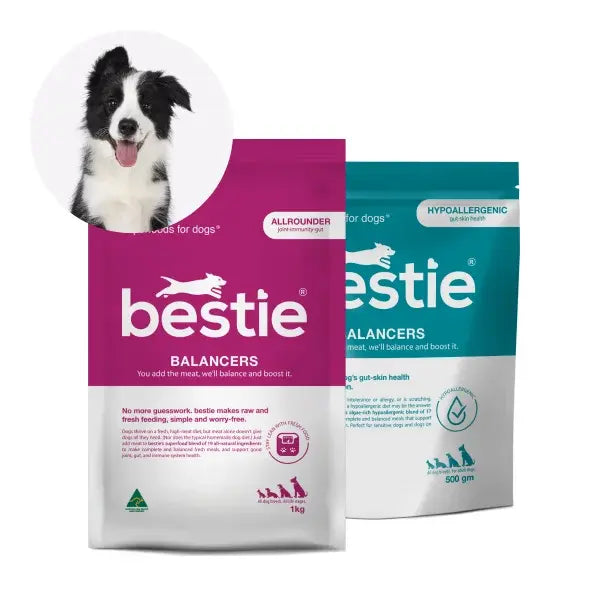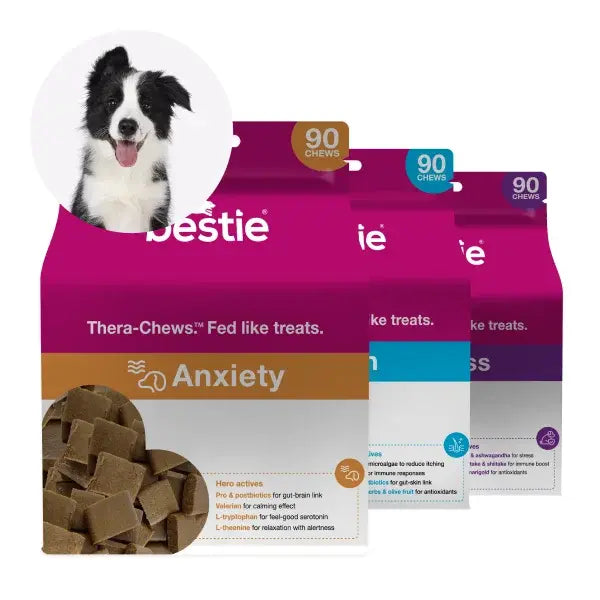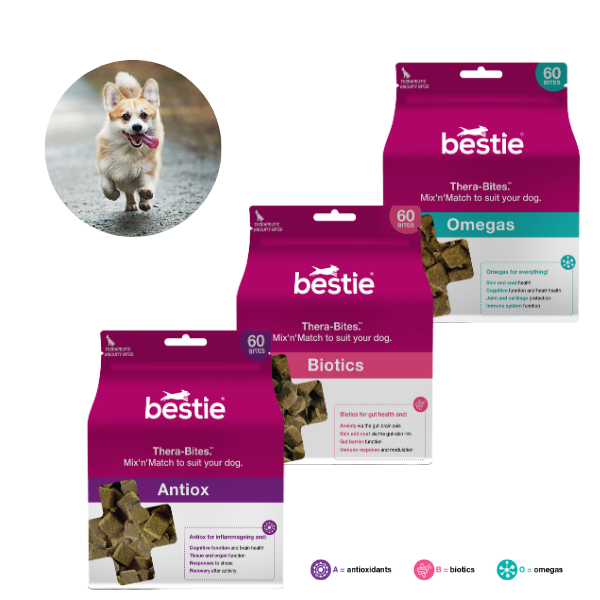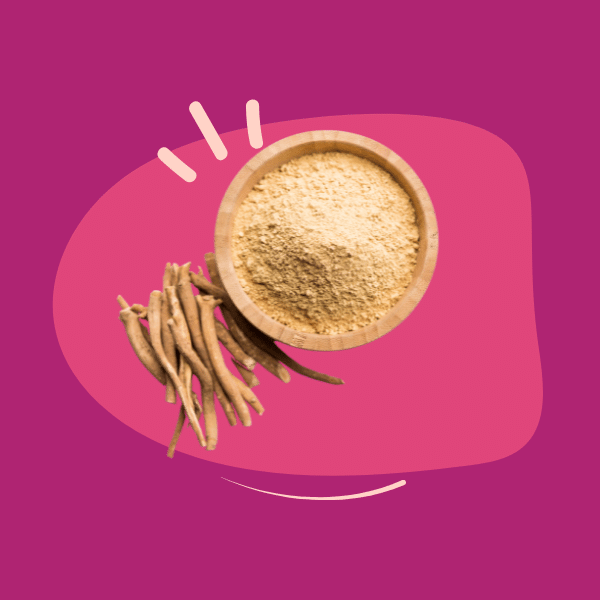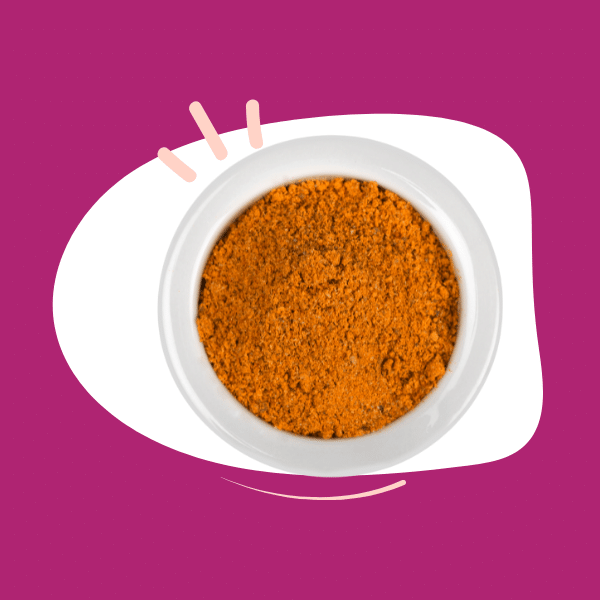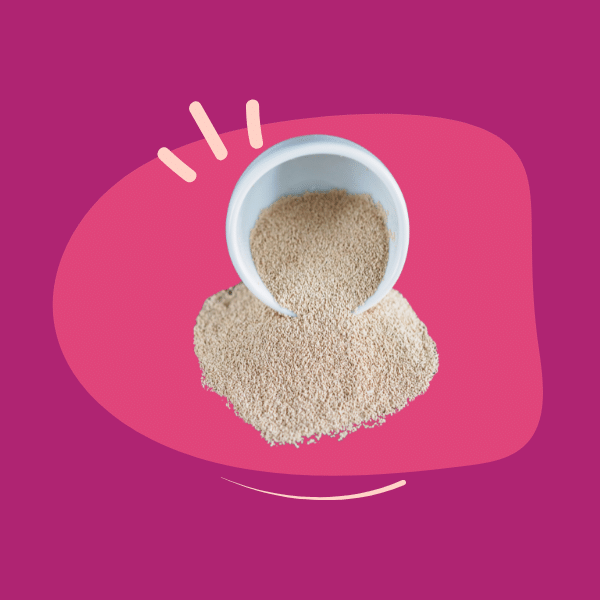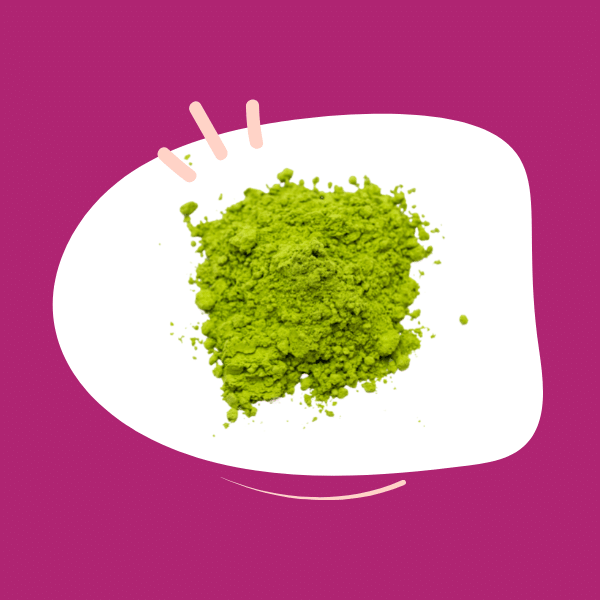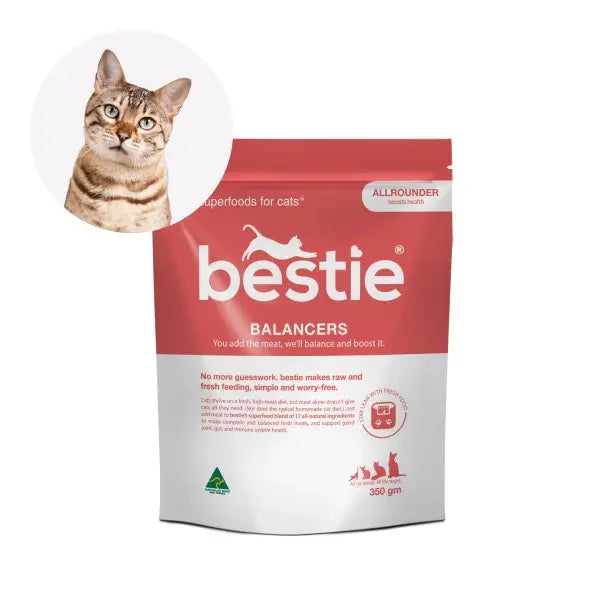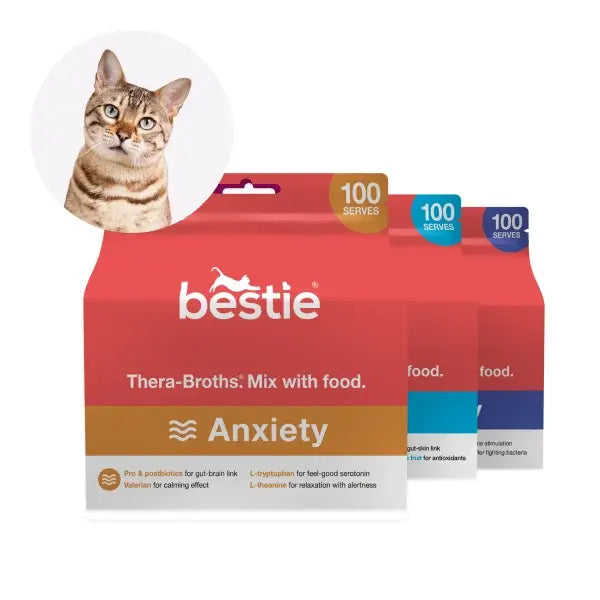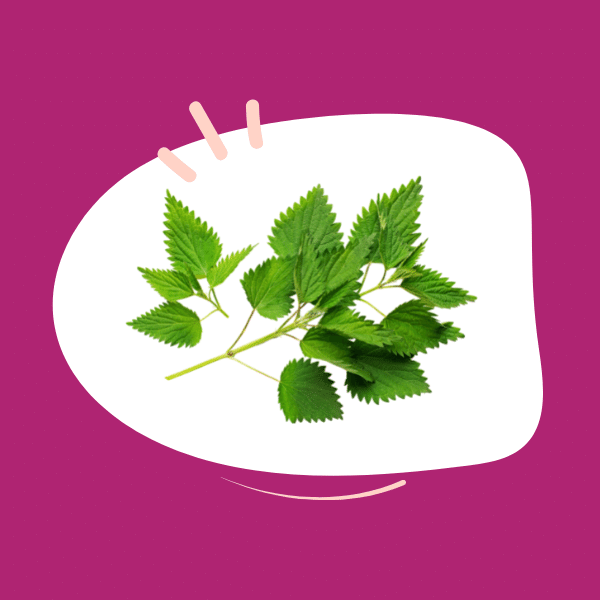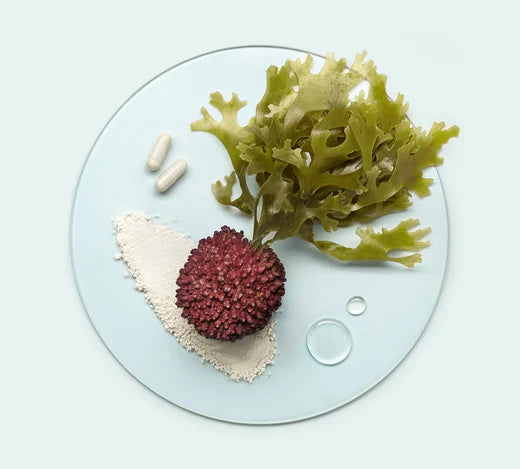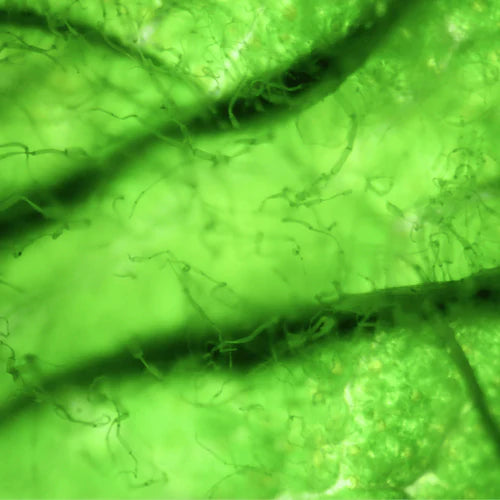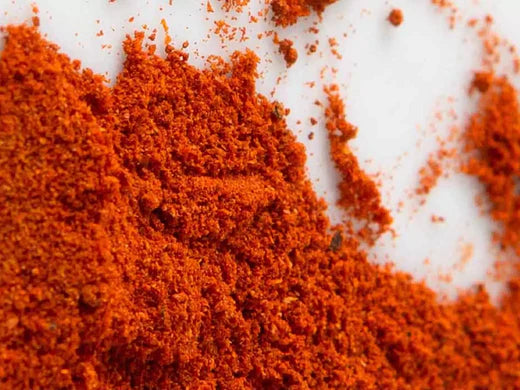Nettle is a kind-of ordinary plant, with extraordinary properties. While it's been used for centuries in traditional medicine and veterinary medicine, today, numerous scientific research support the many health benefits of nettle.
Its leaves, stems, stinging trichomes, and roots are packed with many biologically-active compounds such as:
- Terpenoids
- Flavonoids
- Carotenoids
- Essential fatty acids
- Polysaccharides
- Protein
- Vitamins
- Minerals
- Tannins
- Sterols
- Histamine
- Isolectins
- Serotonin
- Acetylcholine
These properties led to nettle being included in ourbalancing supplements for both dogsandcats. In particular, that nettleis rich in flavonoids that have both antioxidant and anti-inflammatory properties.
What makes nettle a good ingredient in pet food?
Nettle can be given in several forms - as raw material in feeds, infusion, tincture, tea, decoction, capsules, ointment, or leaf powder. (We use organic leaf powder in our bestie balancers.)
Newly harvested nettle contains approximately 90% moisture, up to 3.7% proteins, 0.6% fat, 2.1% ash, 6.4% dietary fibre, and 7.1% carbohydrates. Nettle leaf powders which are used in pet food products and supplements contain on average 30% proteins, 4% fats, 40% non-nitrogen compounds, 10% fibre, and 15% ash.1
Table 1.ChemicalComposition ofNettleLeafPowders.1
|
Parameter |
Content |
|
Moisture (%) |
7.04 ± 0.77 |
|
Crude protein (%) |
33.77 ± 0.35 |
|
Crude fiber (%) |
9.08 ± 0.14 |
|
Crude fat (%) |
3.55 ± 0.06 |
|
Total ash (%) |
16.21 ± 0.54 |
|
Carbohydrate (%) |
37.39 ± 0.72 |
|
Calcium (mg/100 g) |
168.77 ± 1.47 |
|
Iron (mg/100 g) |
227.89 ± 0.21 |
|
Tannins (%) |
0.93 ± 0.01 |
|
Polyphenols (mg GAE/g) |
128.75 ± 0.21 |
|
Carotenoids (μg/g, db) |
3496.67 ± 0.56 |
|
Caloric value (kcal/100 g) |
307.24 ± 0.13 |
With these nutrients and biologically-active substances jam-packed in nettle, it’s no wonder why this seemingly insignificant grass is a superfood for dogs. It has become an important ingredient in many nettle-based dietary supplements for pets. You simply sprinkle some nettle powder supplement on top of your pet’s food.
Nettle promotes brain function
Histamine influences the physiological function of the central nervous system which can affect cognitive processes, including learning and memory.2This can help prevent behavioural issues associated with age-related cognitive dysfunction that is a common problem in senior dogs.
Phenols and terpenes in nettle exert a positive effect on inhibition of atherosclerosis and age-related degenerative brain disorders.
Anti-inflammatory properties of nettle
Nettle is rich in flavonoids with both antioxidant and potent anti-inflammatory properties.
Flavonoids in nettle can help alleviate symptoms of osteoarthritis and joint pain. Clinical trials have shown nettle to be as effective as commonly used anti-inflammatory medications. It can be used in combination with NSAIDs to allow patients to decrease their dose of NSAIDs.
Applying nettle leaves directly on the joint can also alleviate pain and discomfort. When combined with fish oil and vitamin E, nettle reduces the need for analgesics to reduce osteoarthritis symptoms.3
The anti-inflammatory benefits of stinging nettles have also been shown to be effective against autoimmune diseases, such as rheumatoid arthritis.
Alone or in combination with synthetic medications and supplements, nettle helps reduce the risks of adverse effects associated with NSAIDs and other types of analgesics.
Nettle minimises allergy flare-ups and other skin problems
Several bioactive compounds in nettle alleviate inflammation associated with seasonal allergies, such as rhinitis. Nettle affects various factors that are involved in allergy reactions. Essentially acting as an antihistamine, it acts to significantly improve allergy symptoms or altogether prevent flare-ups.
Nettle extract when taken orally has been shown to inhibit several inflammatory events that trigger symptoms associated with seasonal allergies. The extract can also inhibit prostaglandin formation which is the reason NSAIDs are prescribed for allergies.4
The anti-inflammatory and anti-histamine properties of nettle also make it an excellent ingredient for eczema medications.
Antimicrobial activity of nettle
Several studies have shown that nettle exhibits antibiotic activity against a wide variety of pathogens. It is active against gram-positive and gram-negative bacteria. Results of a clinical study has shown nettle to have antimicrobial properties comparable to that of strong antimicrobials, such as ofloxacin, miconazole nitrate, and netilmicin.5
Powerful antioxidant effects
When compared with standard antioxidants, such as butylated hydroxyanisole (BHA), butylated hydroxytoluene (BHT), quercetin, and alpha-tocopherol, nettle had effective reducing power, free radical scavenging, super oxide anion radical scavenging, hydrogen peroxide scavenging, and metal chelating activities.5
The antioxidant effects of chlorophyll in nettle are excellent for dogs that are prone to digestive issues, urinary tract problems, and other health conditions.
Anti-diabetes properties
It has long been speculated that nettle possesses anti-diabetic properties. But it’s only recently that studies demonstrated the anti-diabetic properties of nettle.6 Nettle extract may help the pancreas produce or release more insulin and could serve as a good supportive treatment to standard hyperglycaemic preparations. In a 2013 study, intake of nettle leaf extract resulted in lowered blood glucose in people with type 2 diabetes.10
Nettle supports digestive function
Nettle can help stimulate the appetite making it ideal for dogs with poor appetites or those that are malnourished and need to gain some weight. It can also stimulate the growth of beneficial bacteria in the gastrointestinal tract.7
Lower blood cholesterol
Phytosterols in nettle reduce the absorption of fat and lipids in the gut and thereby lower blood cholesterol levels. It also stimulates lipoprotein lipase activity which can help protect against cardiovascular diseases.
Immunomodulatory effects
Several studies have demonstrated the immune-boosting properties of nettle. Supplementation has been shown to increase both red and white blood cells counts and stimulate T-lymphocyte proliferation. Lymphocytes are a type of white blood cell that play a major role in the immune response.8
The immunostimulant properties of nettle can significantly reduce mortality caused by bacterial infections in rainbow trouts. It’s also being used as a growth promotant in fish .9
Nettle’s immunomodulating activity seems to be ascribable to its polysaccharide and lectin fractions, able to stimulate proliferation and interferon secretion of human lymphocytes.11
List of references:- Adhikari B.M., Bajracharya A., Shrestha A.K. Comparison of nutritional properties of stinging nettle (Urtica dioica) flour with wheat and barley flours. Food Sci. Nutr.2016;4:119–124. doi: 10.1002/fsn3.259.
- Blandina et al. Acetylcholine, histamine, and cognition: Two sides of the same coin. Mem.2004;11:1–8. doi: 10.1101/lm.68004.
- Christensen R., Bliddal H. Is Phytalgic® a goldmine for osteoarthritis patients or is there something fishy about this nutraceutical? A summary of findings and risk-of-bias assessment. Arthritis Res. Ther.2010;12:105. doi: 10.1186/ar2909.
- Roschek, et al. 2009. Nettle Extract (Urtica dioica) Affects Key Receptors and Enzymes Associated with Allergic Rhinitis. PHYTOTHERAPY RESEARCH Phytother. Res. (2009) Published online in Wiley InterScience
(www.interscience.wiley.com) DOI: 10.1002/ptr.2763
- Gülçin I., Küfrevioglu O.I., Oktay M., Büyükokuroglu M.E. Antioxidant, antimicrobial, antiulcer and analgesic activities of nettle (Urtica dioica)J. Ethnopharmacol.2004;90:205–215. doi: 10.1016/j.jep.2003.09.028.
- Sharafetdinov Kh.Kh, Kiseleva T.L, Kochetkova A.A., Mazo V.K. Promising plant sources of anti-diabetic micronutrients. Diabetes Metab.2017;8:778.
- Wenk C. Why all the discussion about herbs? In: Lyons T.P., editor. Feed Industry, Proceedings of the Alltech’s 16th Anniversary Symposium Biotechnology.Alltech Tech.; Nottingham, UK: University Press; Nicholasvile, KY, USA: 2000. pp. 79–96
- Herrera et al., “Effects of Extract of Urtica dioica L. (Stinging Nettle) on the Immune Response of Rats with Severe Malnutrition,” Journal of Complementary Medicine Research 9(2), 63–73 (2018).
- Ngugi et al. Effects of dietary administration of stinging nettle (Urtica dioica) on the growth performance, biochemical, hematological and immunological parameters in juvenile and adult Victoria Labeo (Labeo victorianus) challenged with Aeromonas hydrophila. 2015. Fish & Shellfish Immunology 44 (2015) 533e541.
- Kianbakht et al. Improved glycemic control in patients with advanced type 2 diabetes mellitus taking Urtica dioica leaf extract: a randomized double-blind placebo-controlled clinical trial. 2013. Clin Lab.; 59(9-10):1071-6. doi: 10.7754/clin.lab. 2012.121019.
- European Medical Agency (EMA). (2012). Assessment Report on Urtica dioica L., Urtica urens L., Their Hybrids or Their Mixtures, Radix. 24 September 2012. EMA/HMPC/461156/2008


